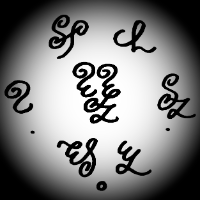Leaderboard
Popular Content
Showing content with the highest reputation on 04/06/2025 in all areas
-
This Moment Musical in A-flat major is the second piece of the four pieces I intend to write for relaxation after finishing the very heavy String Sextet. As the title suggests, I only want to achieve Schubertian simplicity with some contemplation here. The result is somewhat a bit beautiful and contemplative for me. Here is the YT link and pdf for you: 5-4-2025 Moment Musical in A flat Major.pdf This piece is the opposite with the Intermezzo in A, the first piece of the set, as it uses the theme from the 1st movement of my First Piano Sonata and the key and texture of the 1st movement of my Second Piano Sonata. The recording and this video is again made in a rush so the quality may not be good. Hope you enjoy this little piece! Here is the previous Intermezzo from the same set: Henry3 points
-
I must admit, at first I unfortunately hesitated to listen to it, knowing full well this gargantuan masterpiece, your self-termed best movement even in comparison to all of your other masterful works, could and would certainly blow me away in such a manner that trying to capture but the slightiest speck of its brilliance into a proper review would be pointless. Even this was a huge understatement, but now, having listened to it in its entirety and starting to recover from such a transcendental journey this masterwork has taken me through, it would be a waste not to express my utter admiration for this thoroughly complex, incredibly expressive marvel of musical endeavour you have managed to outdo yourself with, even to your own high standards. The solemnity and sorrowfully contained, tragicly yearning character of the first theme, followed by the intermittent protagonism of the cello from 6:00 onwards, all coupled with such a diverse array of accompaniment textures, gives these passages a very passionate and intimate timber which fits quite well with the whole thematic significance of the Lamentoso section. Even with the sheer amount of well-structured passages with enharmonic modulations, the choice of the main key for this first section of the movement is just as fitting: I have some remnants of chromatic synesthesia myself, and the sense of sorrow and despair provided by F-sharp minor in this context is far more intense to me than that of coadjacent keys like G minor or G-sharp minor, making it one of my favourite keys. The imitative build up by the end of the Lamentoso contrasts very effectively with the following passage that ends it right before the fugue. The harmonics in the violins between bars 199 and 202 reminded me of the sonority of the Chinese sheng and bamboo pipes (笙簫), which I find a pretty spot-on idiomatic reference! Now, onto the fugue: what I found most remarkable from the very beginning is the adventurous minor 2nd dissonances between both voices in each entry pair. The computerized performance doesn't soften them enough, but I'm certain an actual interpretation by real, professional musicians would be able to bring out the most delicate subtlety of these dissonances, though given the character, tempo and dynamics of the fugue, I'm not entirely sure whether they are meant to be subtle or not. Either way, real performers would surely make them sound better. The development section of the fugue is as immaculate as it is expressive, and the enharmonic modulation to C minor in b. 266, as well as the soothing return to F-sharp minor in b. 271~272, both serve as a contrasting inflection point for the outstanding stretto passages starting at b. 287 and b. 309. The return of the C minor storm at b. 317 serves as a rather pleasingly recognizable pattern leading to the fugue's climax, and the overlapped inversions of the subject's 2nd motivic cell throughout, though somewhat hidden, are incredibly rewarding to find. The following return to F-sharp minor fully completes the circle, giving this whole alternating passage between both keys one tritone apart the cornerstone of internal modulatory coherence. Following the last motiv cry of desperation in b. 393~394 from the first violin, the unexpected introduction to C major with pentatonic reminiscence all over worked as a rather compelling interlude bridging the gap between the sorrowful tone of the first half of the movement and the buildup towards the climax. The arch-shaped melody on the violins with pentatonic counterpoint underneath was simply superb. The sudden return to tragedy between b. 418 and 424 acted as a reminder of the movements overarching character, without undermining the heavenly order of the previous passage, as well as the selective recapitulation episode between b. 424 and 438, prior to the proper "Return" with the rhythmic ostinato on the 2nd cello and the rising and falling dominant 7th arpeggios on the rest of the voice creating a sense of trance before the final contrast between the rising arpeggio on all voices in C major with its subsequent equivalent in the C-sharp whole-tone scale and the growing tension provided by the repeating 16th-note motif on all other voices for a final return to F-sharp minor and the succinct yet elegant conclusion to the fugue in alternating octaves. As for the religious chant, the alternating sections between romantic molto expressivo passages and the organum pedal points with modal viola melodies and the reoccourring flautando reminiscent of b. 199~202 provide a devout, serene atmosphere evidently reminiscent of a more medieval atmosphere, and the organum parallelum in 4ths between both violas suddenly reminded me of some of Joe Hisaishi's own applications of these techniques. The sonority of the miniclimax between bars 535~538 reminded me of several romantic composers at once, the likes of Tchaikovsky, Grieg and Rachmaninov in a single, sunset-like chord brimming with secretly coalescing influences. The passage beginning at b. 540, with its pizzicato ostinati and the return of the 1st cello as the protagonist of flowing pentatonic melodies, reminded me of Shinto rituals and their deep sacrality. The exploration of timbral polyvalence here is majestic: one struggles to tell whether the modal mixture in pizzicati on the violins sound like metal or wooden percussion, strings or reeds. As the imitation between the cellos grows and the pizzicati thunder at the end, the glissandi and pizzicati in bars 569~571 call back to those between b. 159~160 and 168~169, granting them new meaning and giving the listener a deeper understanding of what they had heard before. I looked up the meaning of the poetic line attributed to Venerable Master Hsing Yun at 25:50, and it certainly provided more context for what was coming next. 春天月下一聲蛙,撞破乾坤共一家 - "A frog's croak under the spring moon shatters the cosmos, revealing we all share one home." This rudimentary English translation hardly captures the boundless beauty and eternal wisdom incapsulated in this verse. The following passages, and the reference to 人於天地之間,天地相交 - "Humans exist between Heaven and earth, where Heaven and earth intersect" add even more meaning to the exchanging and crossing of voices... from this point on I find it hard to even conceptualize and voice the way the Tao speaks through your music, through you. Its all-encompassing power in the middle of an imperfect universe in constant fluctuation, destruction and recreation - the music is just so perfect and at the same time so reflective of all the sorrows, the tragedies, the imperfections of this flawed, impermanent world. The transition from the fresh, flowing character of the whole G-flat major build up to the glory of C major is simply magnificent. The temporary transition to the floral and divine of A-flat major and back to C major through both ethereal and Earth-shattering modulations gives even further meaning to the paradoxical, contradictory appearance of the Tao in contrast to its immanent and unchanging nature. Listening to the inversely rising and rapidly cascading passages of the following return to G-flat major felt like a trance, like momentaneously falling into the eternity of a hypnotic fractal. The last section of this unbelievably awe-inducing climax brings a newly dignified and solemn character amidst the marvels of this reconstitution and recreation painted through music in the highest domes and furthest spheres of Heaven. The themes from the whole piece, the subjects from the fugue return all in harmony. And moving onto the recapitulation of the first theme, now purified and eternal, alternating with the more playful interlude-like passages leading to the finale, one last rise to the Heavens and subsequent cascade back to Earth, unifying them with the last chords and suffusing with Humanity with the subtle yet exceeding symbolism of the last glissando. Naturally, this review hardly makes any justice to the sheer magnificence of this intertextual nonpareil masterpiece. With such a lush abundance of both internal and external references, I must have missed many details which contribute to the greater hole in these first listening experiences. The internal narrative structure is so incredibly diverse one could mentally recall and recreate an entire universe of sound and color with each listen, and still be eager for the next. This being your best movement to date is hardly an overstatement, it's an epic of biblical proportions, almost like a whole symphony in the span of a string quartet movement, like the entirety of Dante's Divine Comedy spanning multiple cultures, histories and traditions all in one single concert. It might perhaps even sound condescending of me to say this, with my short, humble fugues and monolithically Baroque counterpoint which could hardly ever reach the variety, diversity, internal coherence and idiomatic mastery of yours, but truly, you have outdone yourself on so many levels that not acknwoledging said fact would be even worse: my sincerest bravo, Henry. I doubt I could ever forget my experience listening to the world you have crafted within this single movement. You are a true master, and perhaps without a doubt, the greatest of our day and age.2 points
-
Hello Sounds fantastic. A good example of a material deriving into something else very different.1 point
-
Schubert is the answer! (no, really, literally it is there) I understand bars 35-42 is meant to be a hybrid first theme/bridge, personally I feel like the piece could use more of a cadence in the new key instead of repeating the 4 bar phrase an octave higher. Let me see if I can arrange the piece for pipe organ, at least the choral part.1 point
-
I am not very familiar with Schubert's specific style. But this musical moment does take me back to that pure romantic period without the later great development. I like the contrast between the almost choral part and the rest, which has a melody that has stayed with me. I also like the chromatic bass in some measures, as a cadenza (measure 2, 7, etc). Although the one in measure 13 sounds stranger to me, perhaps because the chord is left in suspense, and resolves into something more unexpected. Something that I think is frequent in these composers. A beautiful piece Greetings.1 point
-
I love these little pieces you're writing. I think it shows an abundance of craftsmanship with how quickly you're writing AND performing these for us. This reminds me a little of Schubert, but done in your own way to call it your own. Well done Henry!1 point
-
Hi @Ferrum! I love the combination of flute and bassoon plus the piano! Very nice writing for both the winds and the piano! All 3 instruments are given the chance to sing the melody and I like that! Very nice counterpoint in b.106 section! For me the modulation in b.129 is amazing! Very nice stylistic harmony and melody for me, even though I never play game hahahahaha! My fav.section is probably the Allegro Vivace in Eb major, so fresh and rhythmic there. I should have said much more but don't because like @Thatguy v2.0 I'm just listening without giving a shxt to analyze at all lol! Thx very much for sharing this unique piece! Henry1 point




